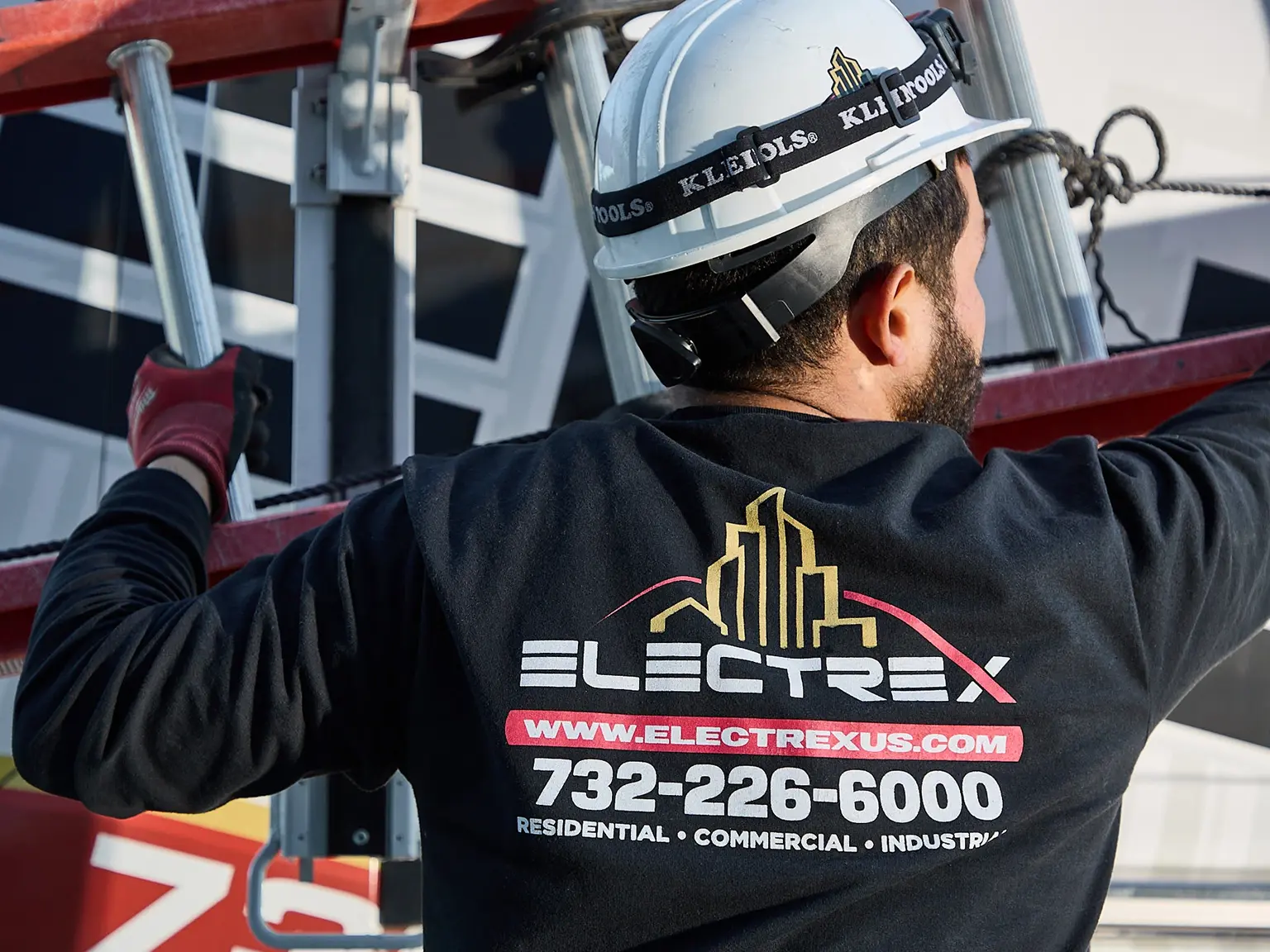At Electrex we’re dedicated to bringing clarity and expertise to the world of electrical contracting services. From residential system upgrades to commercial electrical solutions, we understand that common electrical terms and concepts can sometimes be unclear. To help you navigate the language and services we offer, the glossary below will provide you with easy-to-understand definitions for a wide range of electrical terms and concepts, including product certifications, system components, and industry regulations. Whether you’re a customer, a prospective client, or simply looking to learn more about the electrical industry, we invite you to explore our glossary below.
Ampere (Amp)
The unit of electric current. Measures the amount of electricity flowing through a circuit.
Blown Fuse
A fuse that has been damaged by excessive electrical current, causing it to break the circuit and stop the flow of electricity. A safety mechanism to protect the electrical system and devices from damage.
Charging Station
A location where electric vehicles can be recharged, often used to replace outlets.
Circuit Breaker
A safety device that automatically interrupts the flow of electricity in a circuit to prevent damage from overcurrent or short circuits.
Conduit
A pipe or channel used to protect and route electrical wiring.
Conductor
A material (typically metal) that allows electricity to flow through it easily (e.g., copper wire).
Current
The flow of electrical charge through a conductor, measured in Amperes.
Energy Star
An international standard for energy-efficient consumer products and appliances. Products with the Energy Star label meet specific energy-efficiency requirements set by the U.S. Environmental Protection Agency (EPA) and the U.S. Department of Energy (DOE). Energy Star products consume less energy, helping to save money and protect the environment.
EV Charger
A device that provides a charging station for electric vehicles (EVs).
Fuse
A safety device designed to protect an electrical circuit from overcurrent.
GFCI (Ground Fault Circuit Interrupter)
A safety device that quickly shuts off power if it detects a ground fault, protecting against electric shock. Often used in bathrooms, kitchens, and outdoor outlets.
Grounding
Connecting an electrical circuit to the earth to provide a path for fault current and protect against electrical shock.
Hertz (Hz)
The unit of frequency, representing the number of cycles per second of an alternating current (AC) waveform.
Insulation
A non-conductive material used to prevent the flow of electricity, typically surrounding wires.
Kilowatt (kW)
A unit of power equal to 1,000 watts.
Kilowatt-hour (kWh)
A unit of energy consumption, equal to one kilowatt of power used for one hour. (What your electric meter measures.)
LED (Light Emitting Diode)
A solid-state lighting device that emits light, more energy-efficient than incandescent bulbs.
Load
The amount of electrical power or current drawn by an electrical device or circuit.
Lumen (lm)
A unit of luminous flux that describes the total amount of light (measurement) emitted from a light source.
NEC (National Electrical Code)
The standard for safe electrical design, installation, and inspection in the United States.
Neutral Wire
A wire in a circuit that completes the electrical path back to the source (usually grounded at the service panel).
Outlet
A receptacle that provides a connection point for electrical devices to draw power.
Overcurrent Protection
A system (fuses or circuit breakers) that protects electrical circuits from damage caused by excessive current.
Panel (Electrical Panel/Service Panel)
The main distribution point for electricity in a building, containing circuit breakers or fuses.
Phase
In AC power, the timing relationship between voltage and current. Common systems are single-phase and three-phase.
Polarity
The positive or negative orientation of an electrical circuit or device.
Power
The rate at which electrical energy is used or transferred, measured in watts (or kilowatts).
Receptacle
See “Outlet”.
Resistance
The opposition to the flow of electrical current, measured in ohms.
Rough-in
The stage of electrical installation that occurs before drywall is installed, including running wires, installing boxes, and mounting components.
Three-Phase Power
A power distribution system that uses three separate AC voltage waveforms, often used for large electrical loads.
Short Circuit
An unintended, low-resistance path between two points in an electrical circuit, causing excessive current flow.
Single-Phase
A type of alternating current (AC) power supply. A single-phase power supply has two wires (a hot wire and a neutral wire), and usually has a single current path.
UL Rated (Underwriters Laboratories)
A product has been tested and certified by Underwriters Laboratories (UL) to meet specific safety standards. UL certification indicates that the product has undergone rigorous testing and meets certain safety requirements for its intended use, reducing the risk of fire, electric shock, and other hazards.
Voltage (Volt)
The electrical potential difference between two points in a circuit, measured in volts. It’s the “push” that drives the current.
Voltage Drop
The decrease in voltage along a conductor due to resistance, especially over long distances.
Watt (W)
The unit of electrical power, calculated as volts multiplied by amperes (Volts x Amps = Watts).
Wiring
The network of conductors used to distribute electricity throughout a building or system.

Ready to Get Started?
Contact us today to discuss your project.